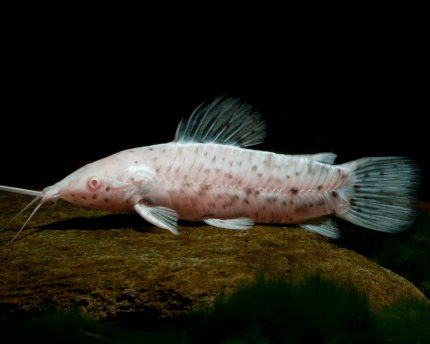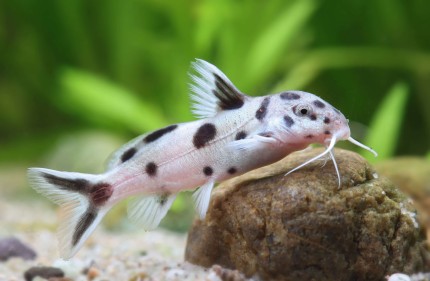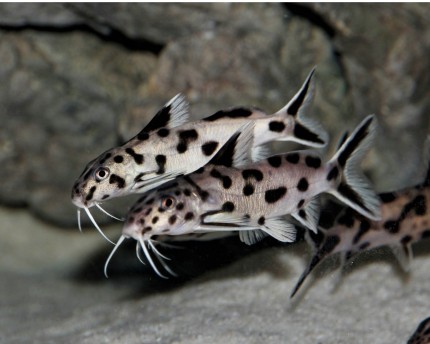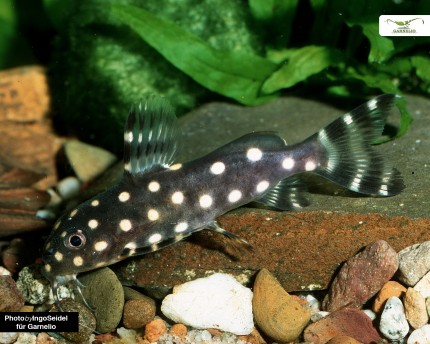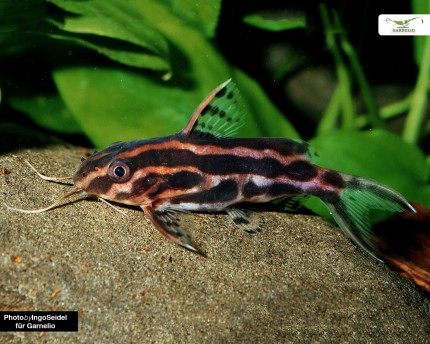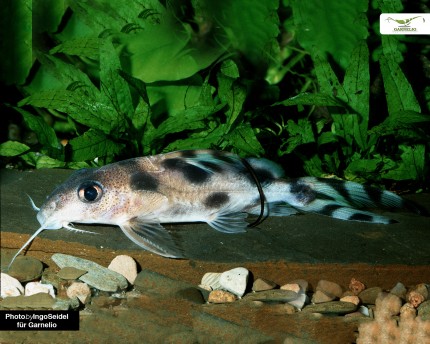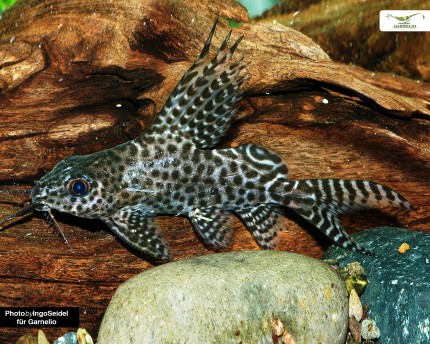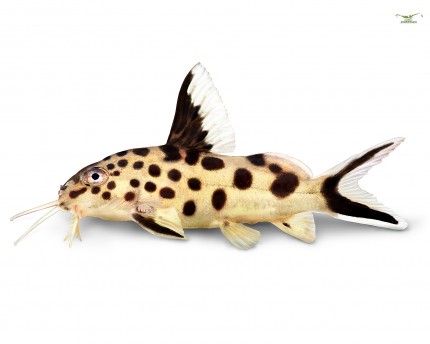Featherbeard catfish in nature
Featherbeard catfishes live in Africa. Here you will find well over 100 species of these fascinating catfishes. They have pinnate and unpinnate long conspicuous barbels around the sucking mouth, to which they owe their name, and a conspicuous, very pronounced adipose fin between the dorsal fin and caudal fin. Pinniped catfish should not be handled, as they have strong spines on the pectoral fin and dorsal fin that can even be poisonous. Featherbeard catfish can make sounds through which they communicate. Aquarium-bred species in particular stand out for their beautiful patterns and contrasting coloration. As aquarium fish, pinniped catfishes are shown to be nocturnal or crepuscular and quite hardy and, at least when young, sometimes quite territorial. They do not have scales.
Featherbeard Catfish prefer a rather hidden life at the bottom of the water. They have only one strongly vestigial swim bladder. At the same time, African Featherbeard Catfish species are found in flowing and stagnant waters, including, for example, Lake Tanganyika. Humic substances are used to the aquarium fish from their biotopes, and their use in the aquarium also makes sense.
Behavior of featherbeard catfish in the aquarium
Featherbeard catfishes are nocturnal. Some species are quite territorial and also intra-species aggressive, so you should keep a small group in any case, so that the activities are distributed and a pecking order can develop. The aquarium should be a suitable size and have a good setup with roots, rock structures and caves of suitable size for the Featherbeard Catfish. Structure is important and helps the fish to keep their stress from becoming too great and to stay out of each other's way. Well-kept featherbeard catfish are not particularly aggressive. However, small fish and crustaceans are sometimes considered food.
Featherbeard catfish in the aquarium
With the exception of a few species such as the yellow-banded featherbeard catfish, which can already be kept in an aquarium from 100 l, the featherbeard catfishes commonly kept in aquariums sometimes become quite large. The guinea fowl catfish, for example, needs a tank with a volume of 1200 liters or more. A group of these Synodontis is suitable for large cichlid aquariums such as Tilapia. Other species can be kept already from 200 liters, 300 liters or from 400 liters. Please note the information for the recommended aquarium size in our online store in the article descriptions. Most Featherbeard Catfish like soft to medium hard water, species from East African lakes like Lake Tanganyika (for example the Spotted Featherbeard Catfish needs medium hard to hard water. Adding humic substances to the aquarium water is helpful. Always offer your featherbeard catfishes in the aquarium also the possibility to hide in from the size suitable catfish caves. Thereby always more hiding places are offered than you keep featherbeard catfish in the aquarium, so that there is no dispute about the best places.
Breeding featherbeard catfish in the aquarium
Not much is known about the breeding of different Featherbeard Catfishes in the aquarium hobby, mostly it is a matter of accidental breeding. However, the Spotted Featherbeard Catfish, for example, is a brood parasite that incubates its eggs like a cuckoo from mouthbrooding cichlids by also mating in the cichlids' mating process, so the cichlids will also ingest the catfish' eggs. The catfish larvae feed on the other fry in the mouth of the cichlids. Breeding this interesting ornamental fish in the aquarium is possible, although not feasible with all species of mouthbrooding cichlids. Tropheus, for example, are anything but enthusiastic about the presence of the Spotted Pinniped Catfish during mating.
Socialization of Featherbeard Catfishes
The rather large growing Featherbeard Catfish in aquaristics are perfectly suited for socialization with large cichlids. On the other hand, they like to help themselves to dwarf shrimps, small crayfish and small fish, so they are not a case for the typical community aquarium. In the article descriptions in our online store, we go into detail about the socialization possibilities of the individual Featherbeard Catfish species from the genus Synodontis.
Feeding featherbeard catfish correctly
Featherbeard Catfish are partly omnivores, partly pure carnivores. Please refer to the article descriptions in the online store. The omnivores are well served with Welstabs, but in addition you should give here also frozen food and live food in high quality. The carnivorous species also like to take our NatureHolic Cichfeed, a soft granulate for predominantly carnivorous fish, in addition to frozen food and live food.
Conclusion
Featherbeard Catfish are beautiful, somewhat special aquarium fish that are the perfect complement to cichlids, especially in larger tanks. Their behavior is interesting and great to watch, and these aquarium fish are incredibly beautifully marked and patterned. Featherbeard Catfish are somewhat more unusual, but wonderful aquarium companions that offer something for the eye when kept well. In Garnelio's online store you can buy first-class featherbeard catfish for your aquarium.

